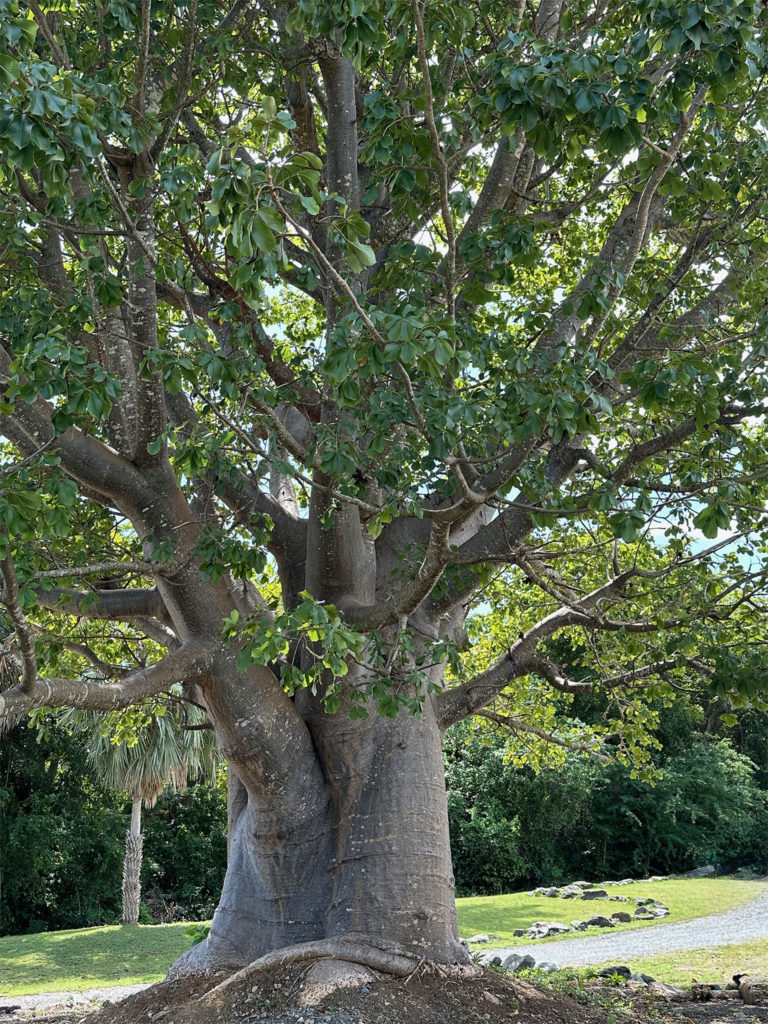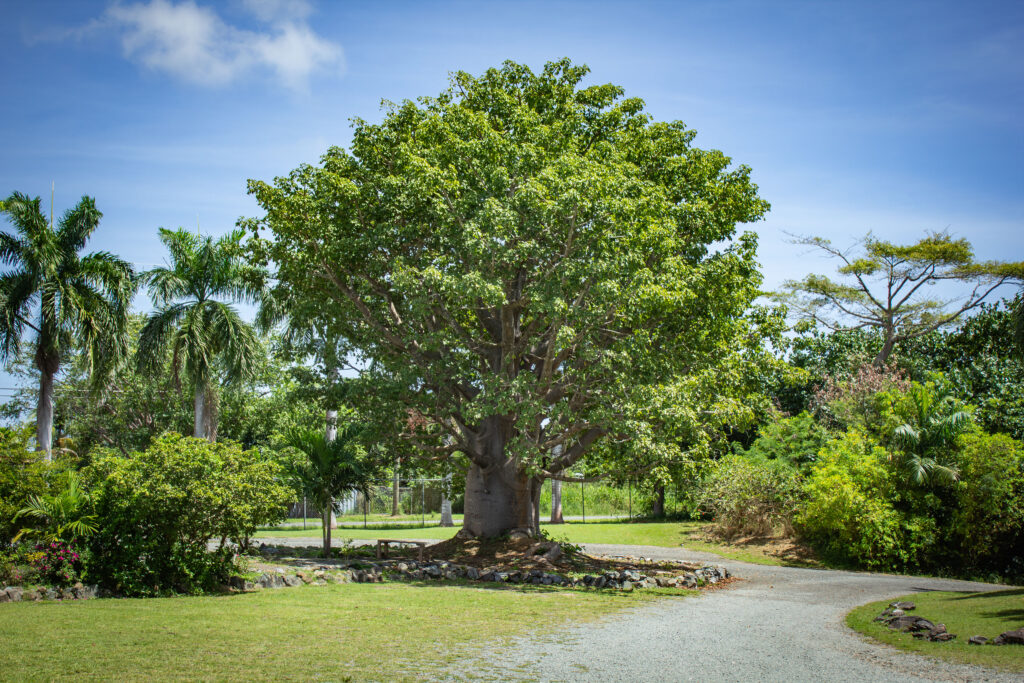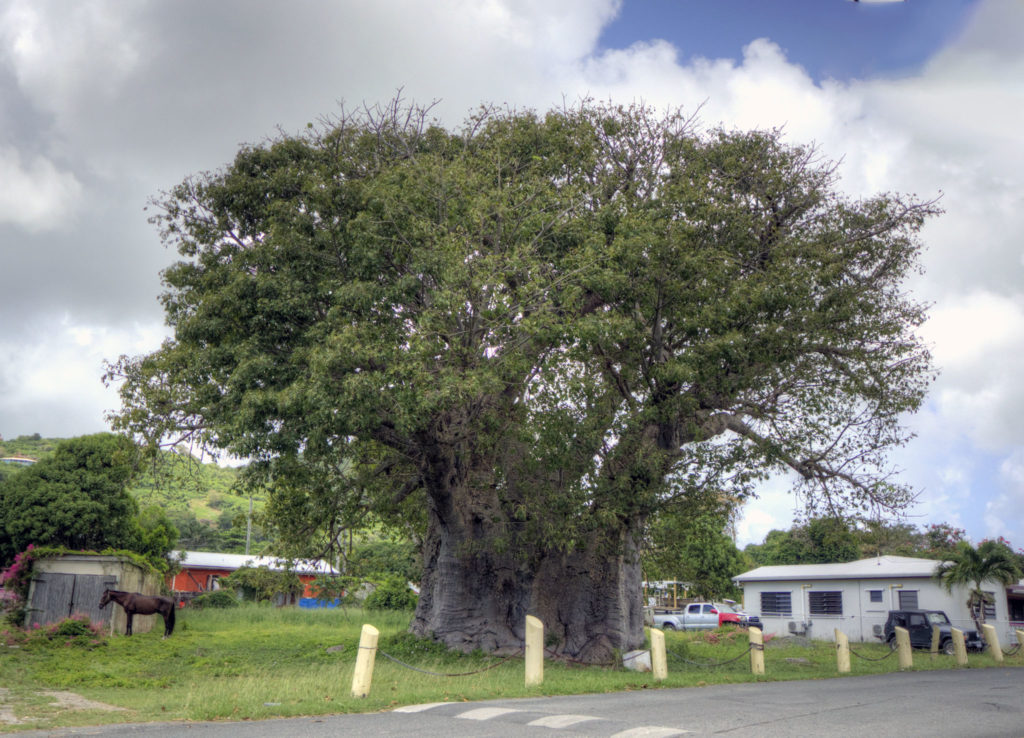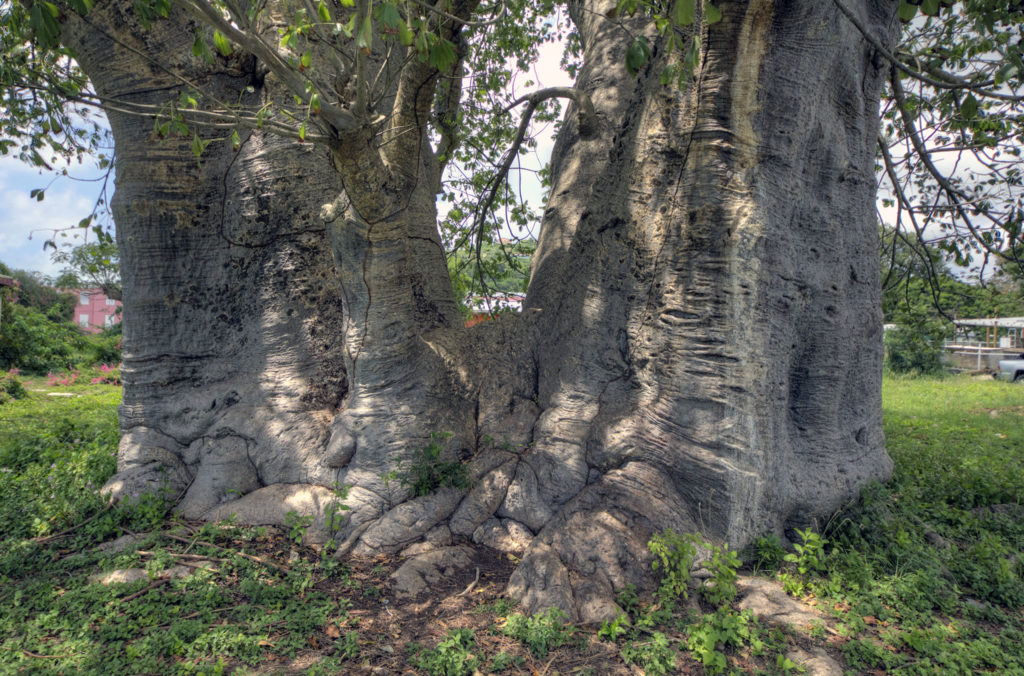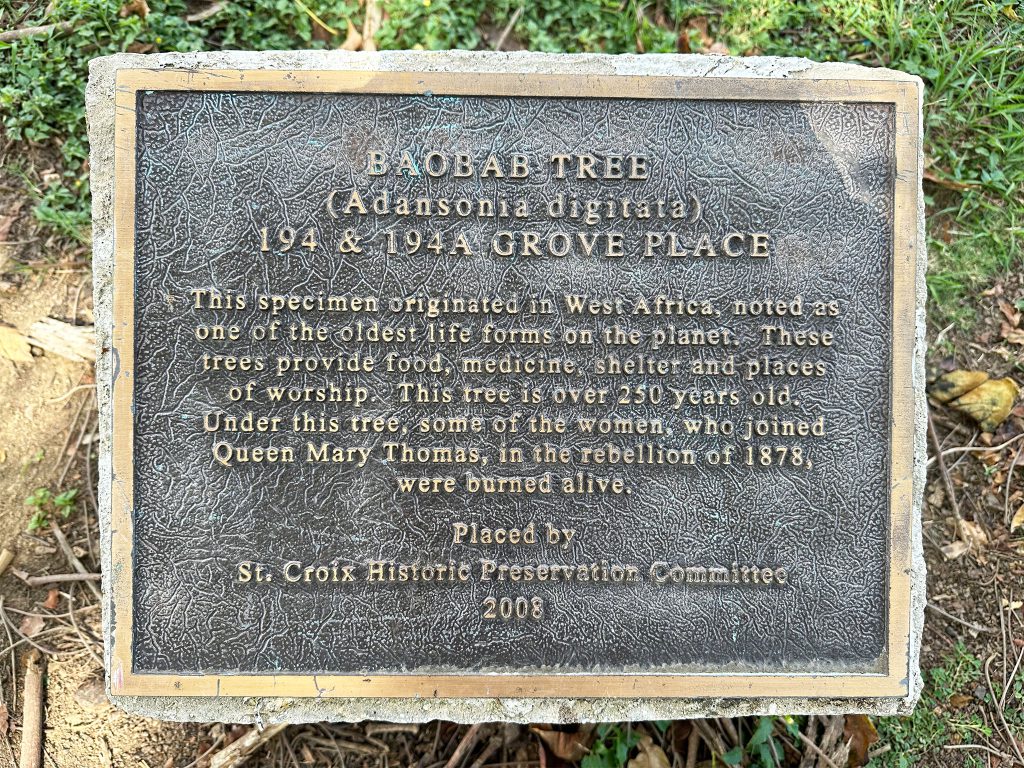Baobab Tree
Scientific name: Adansonia digitata
Common names: Baobab tree, African baobab, Guinea Almond, Upside-down tree, Cream of tartar tree, Monkey-bread tree, Lemonade tree, Dead-rat tree, Bottle tree, Mowana tree
The Baobab tree, Adansonia digitata, is the most widespread tree species of the genus Adansonia, the baobabs. It is native to West Africa, and seeds were transported to St Croix by slaves. The 50-foot circumference Grove Place Baobab (17.726208° -64.824316°) is the oldest and largest in the Virgin Islands. Currently it comprises four stems sprouting off of a single root system. The age of the tree is estimated from its circumference as the intgerior of the stems are a spongy fiber, allowing for storage of vast quantities of water. On St. Croix, it is also called Guinea Almond, because the tree comes from the country of Guinea in Africa, and because the seeds have a nutty flavor when eaten fresh. The flowers appear at night and are pollinated by fruit bats or large insects, disappearing in the morning leaving the seed pod to develop.
Medicinal Uses:
The baobab tree is known for its various medicinal uses. In many African countries where the tree is native, various parts of the baobab tree have been traditionally used for medicinal purposes. Some common medicinal uses of the baobab tree include:
- Nutritional Supplement: The fruit of the baobab tree is rich in vitamin C, antioxidants, and other nutrients. It is often used as a nutritional supplement to boost the immune system and overall health.
- Digestive Health: The baobab fruit pulp and seeds are used to treat various digestive issues, including diarrhea, constipation, and indigestion. The fiber-rich fruit pulp is known for its prebiotic properties, which can support a healthy digestive system.
- Anti-inflammatory: Baobab fruit extract has been shown to have anti-inflammatory properties, which may help reduce inflammation and related conditions.
- Skin Health: The oil extracted from baobab seeds is used in skincare products for its moisturizing and emollient properties. It is believed to help soothe dry skin and improve skin elasticity.
- Fever Reduction: In some traditional medicine systems, baobab bark and leaves are used to reduce fever and alleviate symptoms of malaria.
- Wound Healing: Baobab leaf extracts are sometimes used topically to promote wound healing and reduce inflammation.


